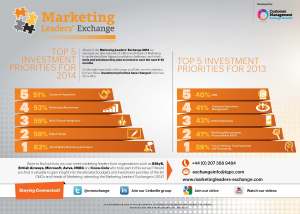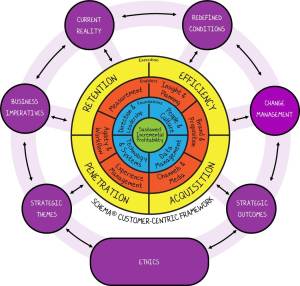To be customer-centric requires business capability to design and to consistently deliver a unique and distinctive customer experience to a selected set of customers in order to acquire, retain and to develop them efficiently.
I was privileged to be taught by the late Dr Russell Ackoff at The Wharton School and he re-enforced my long held belief that one of the major challenges organisations face when trying to transform their business models to become more customer-centric is a lack of systems thinking. Dr Ackoff produced extensive research, insights and knowledge into how systems thinking is the only way to approach organisational development. He explained that many of the challenges we face in trying to understand our organisations such that we can transform them, come from using analytical thinking.
Systems thinking is an approach that views the organisation as a whole (end-to-end) comprised of many parts (functions/silos), yet, at the same time, it is more than the sum of the individual parts. (To deliver a unique and consistent experience requires the organisation to be joined-up – to operate as a single seamless entity.)
Dr Ackoff added that a system is also defined by the function it fulfils in the wider system – this speaks to our organisational role in society and community and embraces the stakeholder universe including, in addition to society, partners, employees, customers and investors.
Dr Ackoff regularly likened the idea of a system to the human body or to a motor-car. He explained the 3 principles of the system being defined by the function it fulfils in the wider system (universe) as follows:-
- Each part affects the behaviour of the whole. (If the heart and lungs are not functioning correctly then this will affect the well-being of the entire body) – think Leadership Team?
- No part has an independent effect on the overall system ( The ability for the muscles to get someone to walk in a straight line will depend on the balance maintained by the inner ear)
- The system itself has properties which none of the parts have (If a hand were cut off, the hand would be unable to write. It is the whole system, the whole body, that enables the hand to write)
These principles highlight the challenge many organisations face as they aspire to develop the capability to deliver unique and distinctive experiences. Trying to understand the organisation capability by analysing and restructuring various operating entities in isolation (e.g. let’s optimise the contact centre and make it really efficient.) doesn’t lead to the transformation required. Sadly, in the above-mentioned contact centre example, ‘efficiency’ measures such as average handling time and # calls answered per day by agent, are the antithesis of customer-centric capability – a customer may want information or may want a problem solved – he/she is not interested in the fact that the agent may have an average handling time target of 2min, 30 seconds, for example.
Taking the analogy further the parts (functions) of the organisation need to mesh together, to be joined up in such a way that they operate seamlessly – to be designed in such a way that they’re supportive of the strategic outcome of the business. The linkages between and across areas of specialisation need to be refined and appropriate for the intended experience. It’s the view and understanding of the whole organisational system as well as an understanding of the universe that allows the organisation to determine where it wants to create it’s ‘high contrast signature experience’ – where it wants to stand head and shoulders above the competition, where it is going to be unique. No business can be the best at absolutely everything.
As per Dr Ackoff, this is akin to taking apart each and every motor car in an attempt, through analysis, to find the best engine, best transmission, best steering, best braking system, best suspension……..best everything. Trying to put all of these ‘best’ parts together would result in an absolute mess as nothing would fit. Trying to scrutinise every part of the system and aggregate an understanding of the parts, doesn’t allow an understanding of the whole. Applying the principles of systems thinking allows an understanding of how the pieces/parts fit together.
Your thoughts?
Filed under: Customer Centricity, Leadership, Operationalising Customer-Centric Business, Sustainable Business Performance | Tagged: 21st century organisations, Big Thinking, business innovation, business performance, business strategy, capability areas, company strategy, customer centricity, customer experience, customer experience management, efficiencies, execution, Inspiration, leadership, marketing ROI, organisational alignment, Sustainability, thinking customer | 2 Comments »



